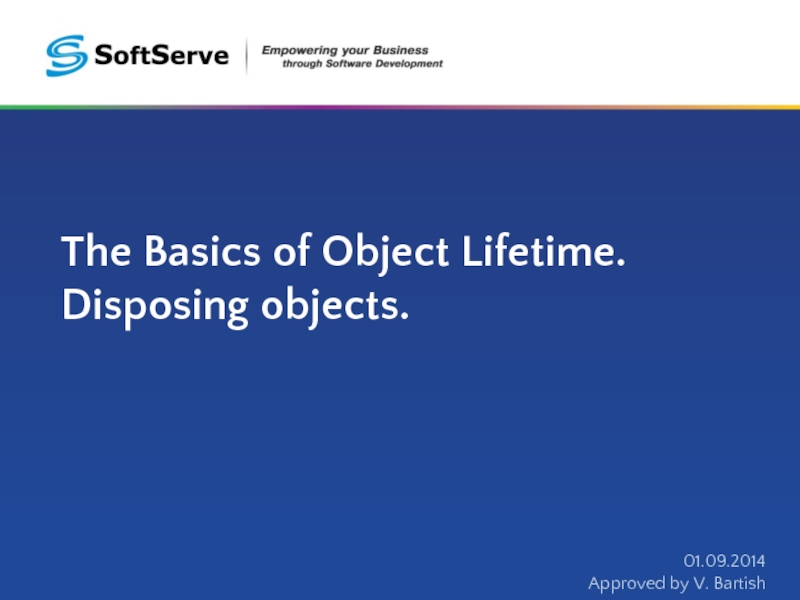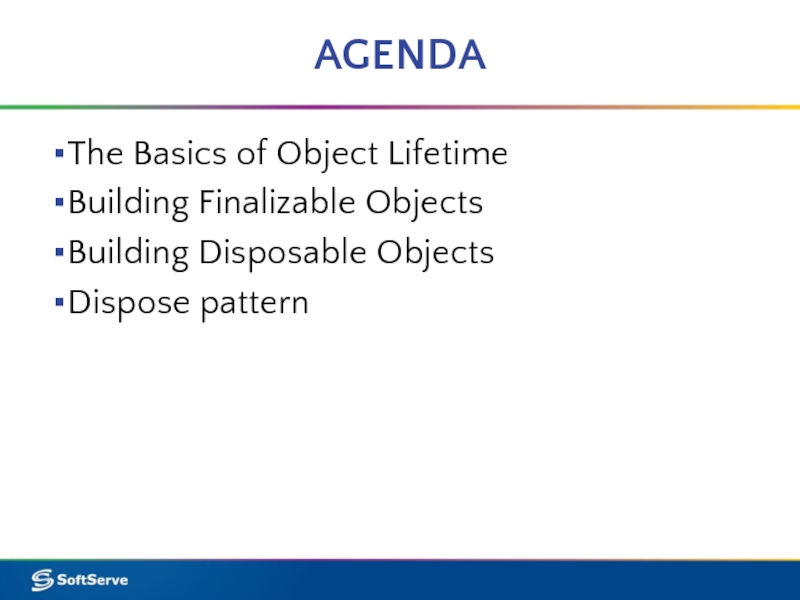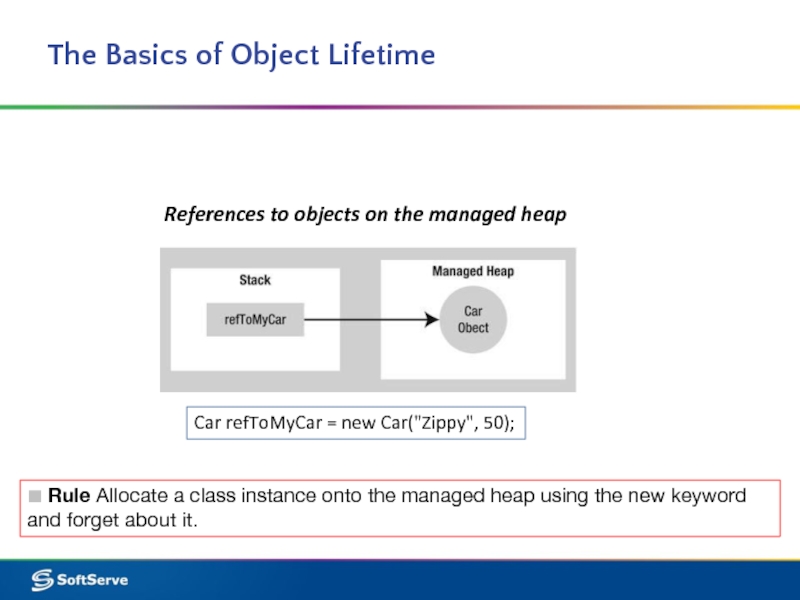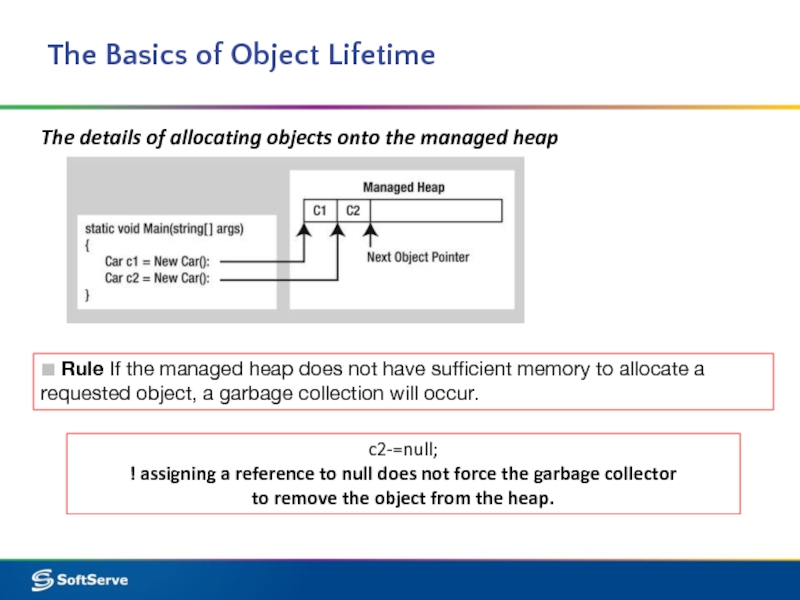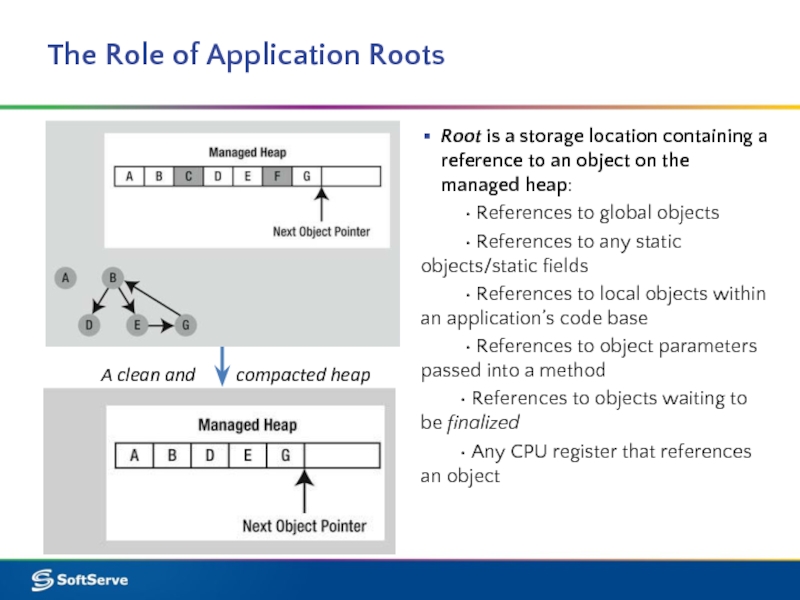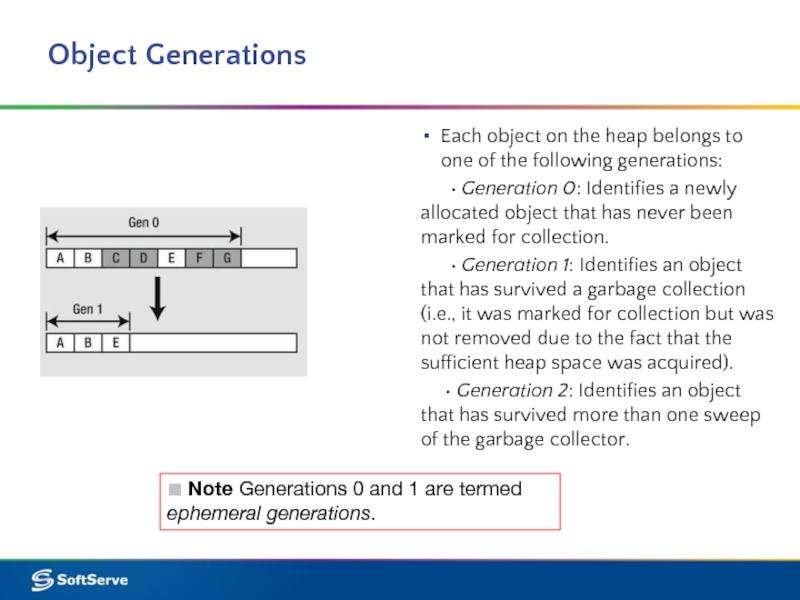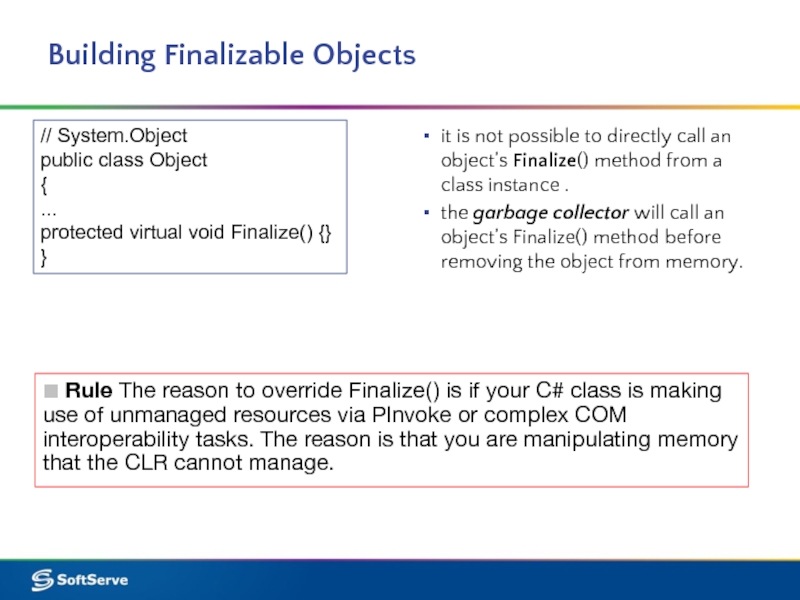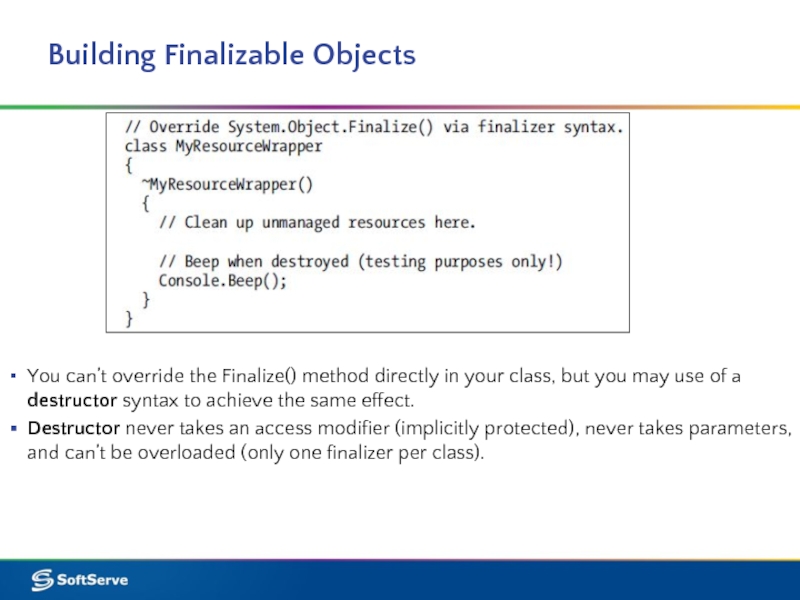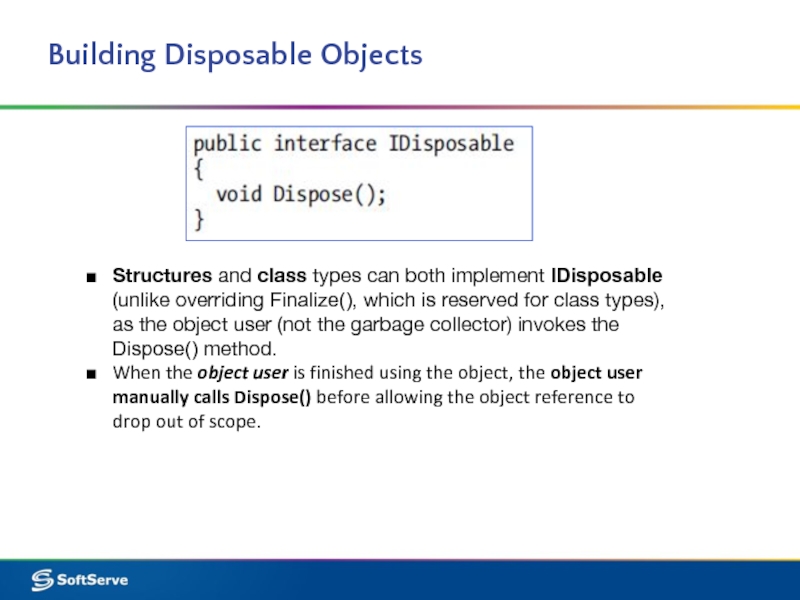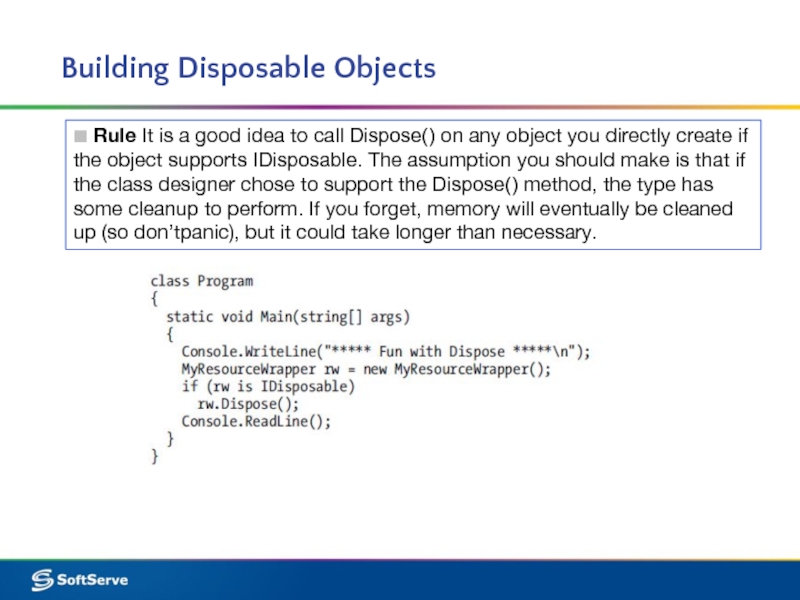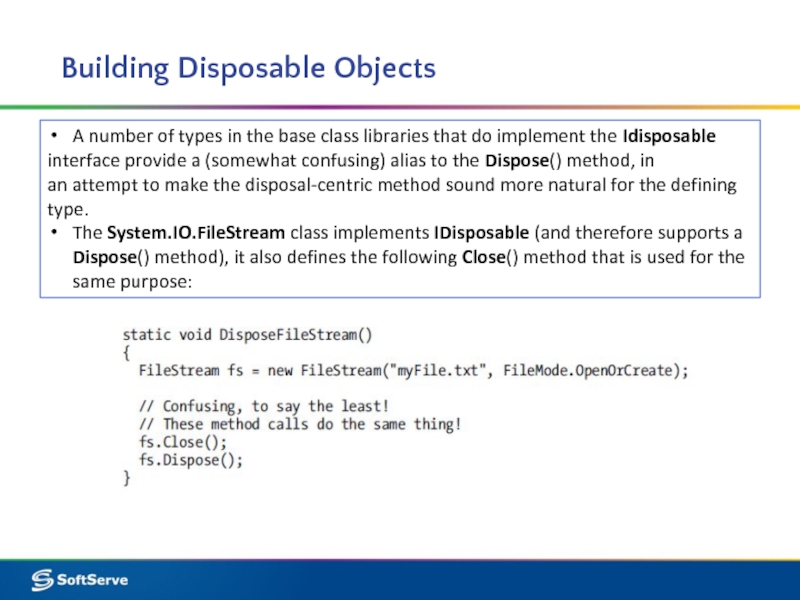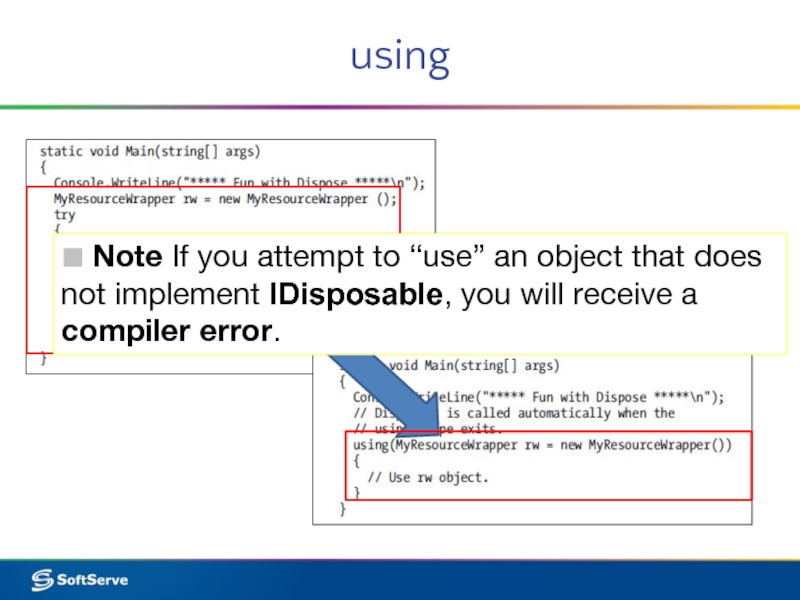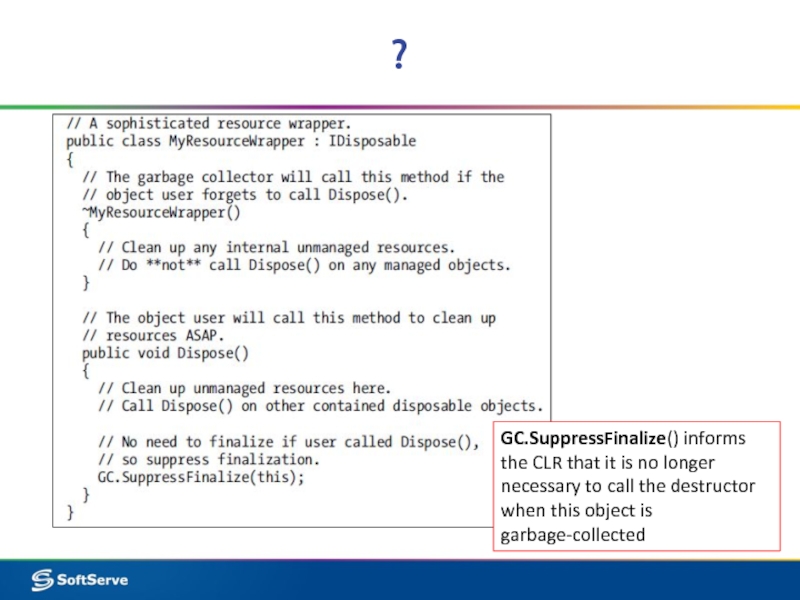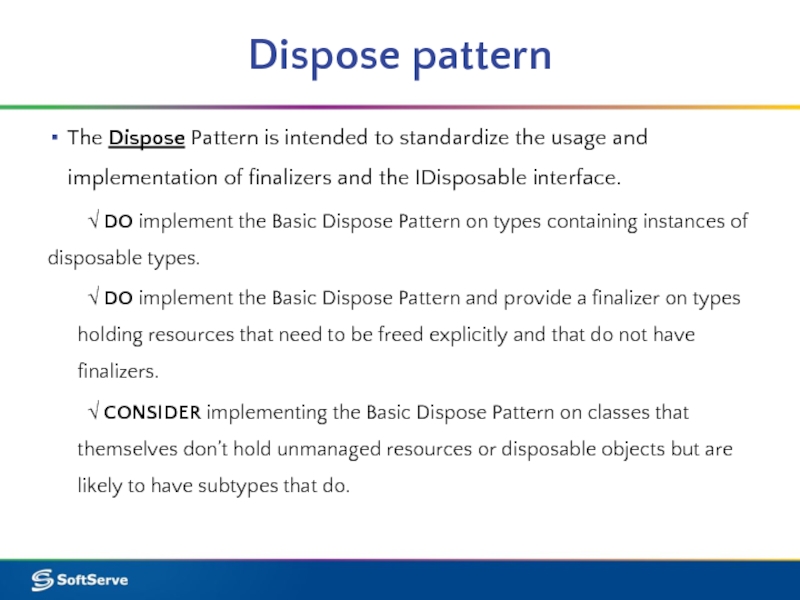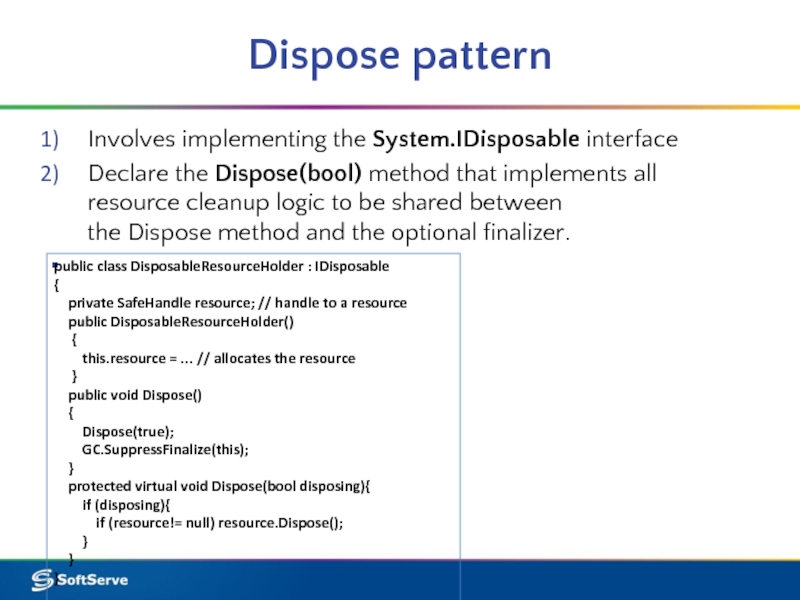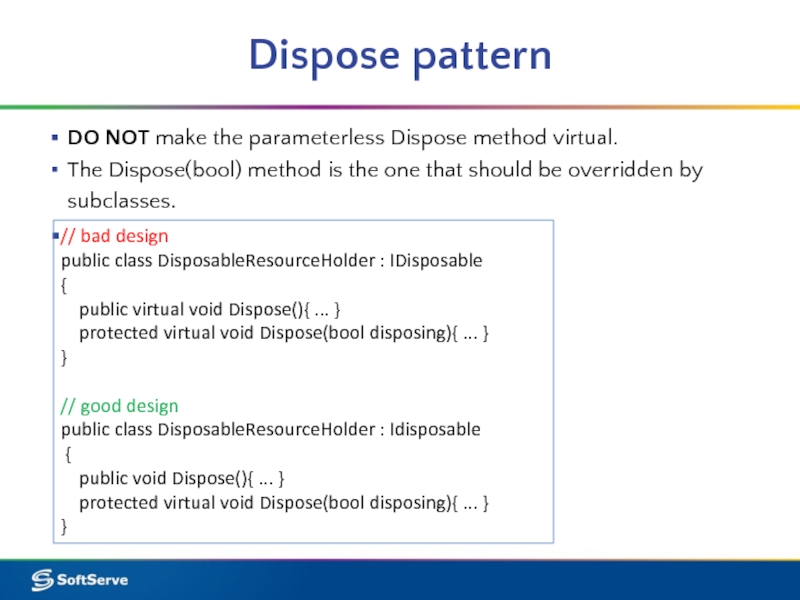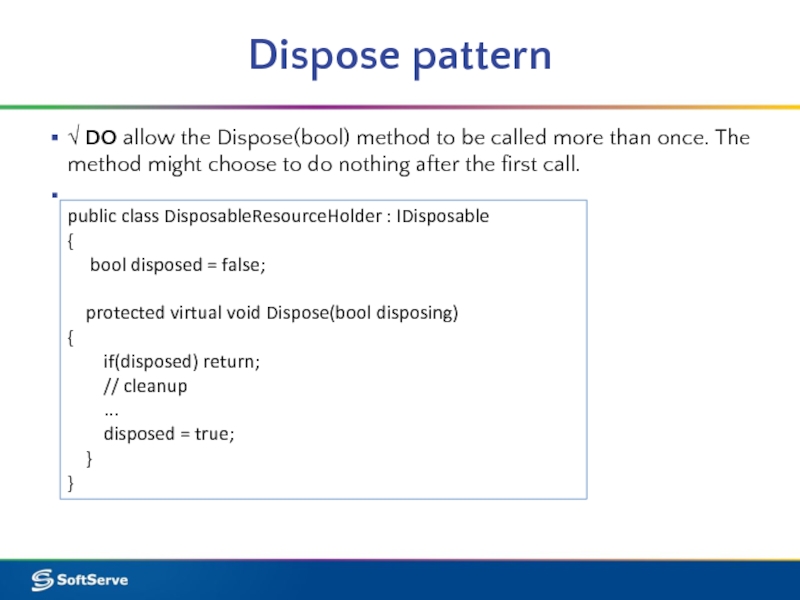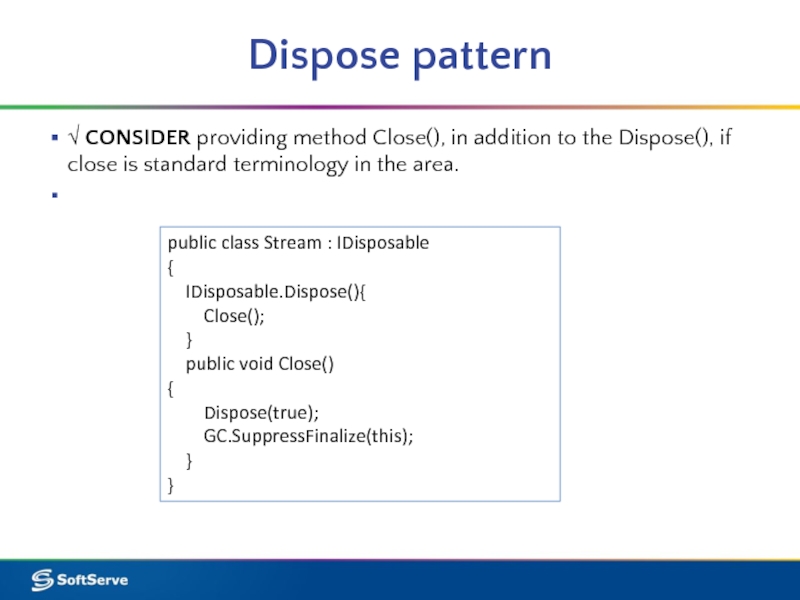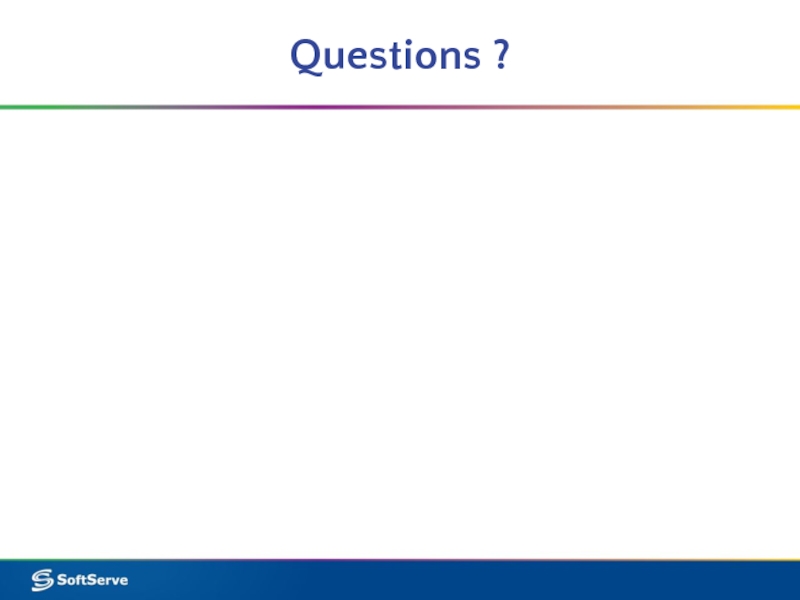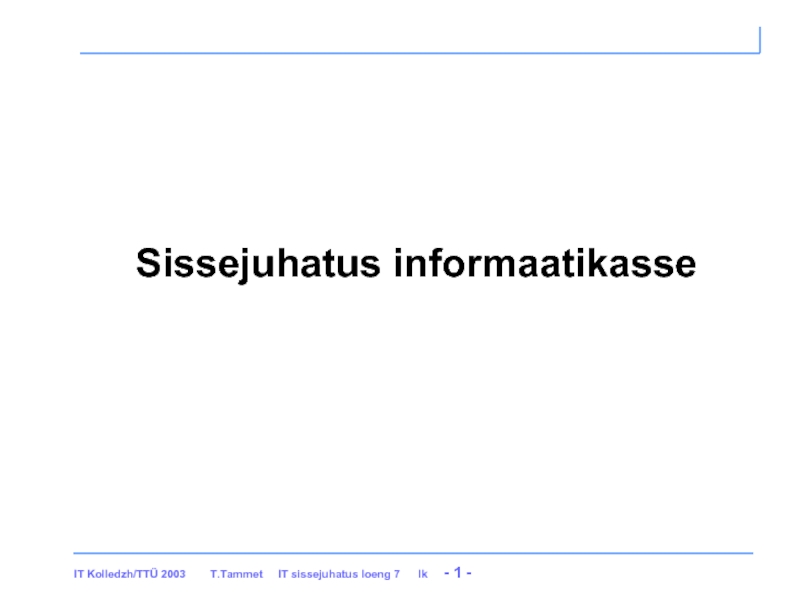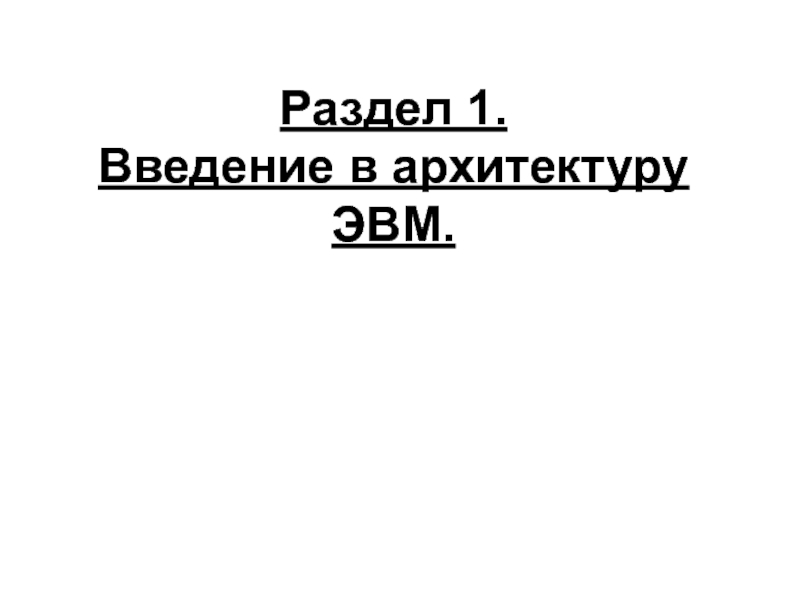- Главная
- Разное
- Дизайн
- Бизнес и предпринимательство
- Аналитика
- Образование
- Развлечения
- Красота и здоровье
- Финансы
- Государство
- Путешествия
- Спорт
- Недвижимость
- Армия
- Графика
- Культурология
- Еда и кулинария
- Лингвистика
- Английский язык
- Астрономия
- Алгебра
- Биология
- География
- Детские презентации
- Информатика
- История
- Литература
- Маркетинг
- Математика
- Медицина
- Менеджмент
- Музыка
- МХК
- Немецкий язык
- ОБЖ
- Обществознание
- Окружающий мир
- Педагогика
- Русский язык
- Технология
- Физика
- Философия
- Химия
- Шаблоны, картинки для презентаций
- Экология
- Экономика
- Юриспруденция
The Basics of Object Lifetime. Disposing objects (Java) презентация
Содержание
- 1. The Basics of Object Lifetime. Disposing objects (Java)
- 2. AGENDA The Basics of Object Lifetime Building
- 3. The Basics of Object Lifetime Car refToMyCar
- 4. The Basics of Object Lifetime The details
- 5. The Role of Application Roots Root is
- 6. Object Generations Each object on the heap
- 7. Building Finalizable Objects ■ Rule The reason
- 8. You can’t override the Finalize() method directly
- 9. Building Disposable Objects Structures and class types
- 10. ■ Rule It is a good idea
- 11. A number of types in the base
- 12. using ■ Note If
- 13. ? GC.SuppressFinalize() informs the CLR
- 14. Dispose pattern The Dispose Pattern is intended to standardize
- 15. Involves implementing the System.IDisposable interface Declare the Dispose(bool) method that
- 16. Dispose pattern DO NOT make the parameterless Dispose method virtual.
- 17. Dispose pattern √ DO allow the Dispose(bool) method to be
- 18. Dispose pattern √ DO throw an ObjectDisposedException from any member
- 19. Dispose pattern √ CONSIDER providing method Close(), in addition
- 20. Questions ?
Слайд 2AGENDA
The Basics of Object Lifetime
Building Finalizable Objects
Building Disposable Objects
Dispose pattern
Слайд 3The Basics of Object Lifetime
Car refToMyCar = new Car("Zippy", 50);
References to
■ Rule Allocate a class instance onto the managed heap using the new keyword and forget about it.
Слайд 4The Basics of Object Lifetime
The details of allocating objects onto the
■ Rule If the managed heap does not have sufficient memory to allocate a requested object, a garbage collection will occur.
c2-=null;
! assigning a reference to null does not force the garbage collector
to remove the object from the heap.
Слайд 5The Role of Application Roots
Root is a storage location containing a
• References to global objects
• References to any static objects/static fields
• References to local objects within an application’s code base
• References to object parameters passed into a method
• References to objects waiting to be finalized
• Any CPU register that references an object
A clean and compacted heap
Слайд 6Object Generations
Each object on the heap belongs to one of the
• Generation 0: Identifies a newly allocated object that has never been marked for collection.
• Generation 1: Identifies an object that has survived a garbage collection (i.e., it was marked for collection but was not removed due to the fact that the sufficient heap space was acquired).
• Generation 2: Identifies an object that has survived more than one sweep of the garbage collector.
■ Note Generations 0 and 1 are termed ephemeral generations.
Слайд 7Building Finalizable Objects
■ Rule The reason to override Finalize() is if
it is not possible to directly call an object’s Finalize() method from a class instance .
the garbage collector will call an object’s Finalize() method before removing the object from memory.
// System.Object
public class Object
{
...
protected virtual void Finalize() {}
}
Слайд 8You can’t override the Finalize() method directly in your class, but
Destructor never takes an access modifier (implicitly protected), never takes parameters, and can’t be overloaded (only one finalizer per class).
Building Finalizable Objects
Слайд 9Building Disposable Objects
Structures and class types can both implement IDisposable (unlike
When the object user is finished using the object, the object user manually calls Dispose() before allowing the object reference to drop out of scope.
Слайд 10■ Rule It is a good idea to call Dispose() on
Building Disposable Objects
Слайд 11A number of types in the base class libraries that do
interface provide a (somewhat confusing) alias to the Dispose() method, in
an attempt to make the disposal-centric method sound more natural for the defining type.
The System.IO.FileStream class implements IDisposable (and therefore supports a Dispose() method), it also defines the following Close() method that is used for the same purpose:
Building Disposable Objects
Слайд 12using
■ Note If you attempt to “use” an object that does
Слайд 13?
GC.SuppressFinalize() informs
the CLR that it is no longer necessary to call
Слайд 14Dispose pattern
The Dispose Pattern is intended to standardize the usage and implementation of
√ DO implement the Basic Dispose Pattern on types containing instances of disposable types.
√ DO implement the Basic Dispose Pattern and provide a finalizer on types holding resources that need to be freed explicitly and that do not have finalizers.
√ CONSIDER implementing the Basic Dispose Pattern on classes that themselves don’t hold unmanaged resources or disposable objects but are likely to have subtypes that do.
Слайд 15Involves implementing the System.IDisposable interface
Declare the Dispose(bool) method that implements all resource cleanup logic
Dispose pattern
public class DisposableResourceHolder : IDisposable
{
private SafeHandle resource; // handle to a resource
public DisposableResourceHolder()
{
this.resource = ... // allocates the resource
}
public void Dispose()
{
Dispose(true);
GC.SuppressFinalize(this);
}
protected virtual void Dispose(bool disposing){
if (disposing){
if (resource!= null) resource.Dispose();
}
}
}
Слайд 16Dispose pattern
DO NOT make the parameterless Dispose method virtual.
The Dispose(bool) method is the one that should
// bad design
public class DisposableResourceHolder : IDisposable
{
public virtual void Dispose(){ ... }
protected virtual void Dispose(bool disposing){ ... }
}
// good design
public class DisposableResourceHolder : Idisposable
{
public void Dispose(){ ... }
protected virtual void Dispose(bool disposing){ ... }
}
Слайд 17Dispose pattern
√ DO allow the Dispose(bool) method to be called more than once. The
public class DisposableResourceHolder : IDisposable
{
bool disposed = false;
protected virtual void Dispose(bool disposing)
{
if(disposed) return;
// cleanup
...
disposed = true;
}
}
Слайд 18Dispose pattern
√ DO throw an ObjectDisposedException from any member that cannot be used after
public class DisposableResourceHolder : IDisposable
{
bool disposed = false;
SafeHandle resource; // handle to a resource
public void DoSomething()
{
if(disposed) throw new ObjectDisposedException(...);
// now call some native methods using the resource
...
}
protected virtual void Dispose(bool disposing)
{
if(disposed) return;
// cleanup
...
disposed = true;
}
}
Слайд 19Dispose pattern
√ CONSIDER providing method Close(), in addition to the Dispose(), if close is
public class Stream : IDisposable
{
IDisposable.Dispose(){
Close();
}
public void Close()
{
Dispose(true);
GC.SuppressFinalize(this);
}
}
